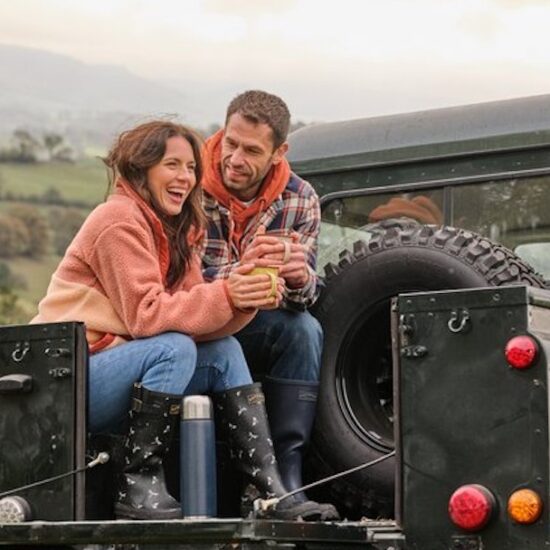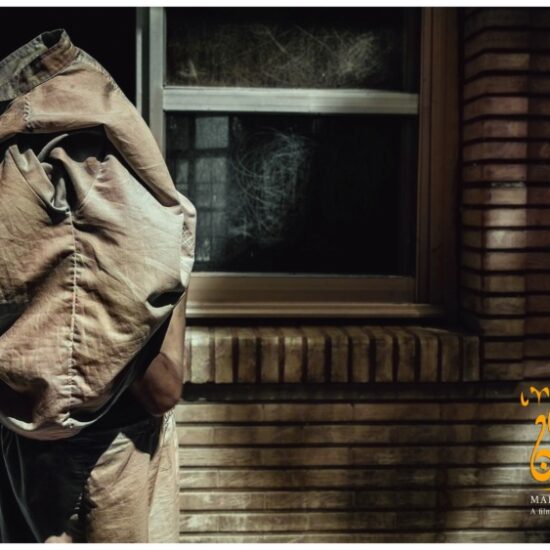
Some documentaries instill rage and inspire action. Some reveal and take you behind the scenes. Some speak to you directly and chase an explicitly political agenda to their finish. Some polemicize and educate. Some cut a path through an formerly erased history. And others, like 20 000 Days on Earth, draw you in emotionally and challenge the parameters of documentary-making.
Iain Forsyth and Jane Pollard’s film does not reside comfortably within any of the genres you might expect from a Nick Cave music film covering the 20,000th day of the legend’s life: rock ‘n’ roll doc, biopic, indie character study, MTV-style promo video. Rather, the filmmakers, by necessity, approached the film as they would a narrative feature, capturing Cave’s songwriting sessions; road trips in a black BMW with famous friends; pasta and anecdotes about Nina Simone and Jerry Lee Lewis, with bandmate Warren Ellis; a therapy session with psychoanalyst Darian Leader; and a rummage through Cave’s personal photographic archives. Cave himself provides the narration, ruminating about time and memory, the creative process, living in a story and telling it, and “the space where imagination and reality intersect.”
Nick Cave (left) and pop artist Kylie Minogue. Courtesy of Drafthouse Films
“We were very aware that we were telling a story rather than writing a biography,” says Forsyth. “We saw the film as a portrait of Nick, in the same way that you paint a portrait or you photograph a portrait. There are different ways of doing that that aren’t strictly journalistic, that can be more impressionistic, more like storytelling. Pretty simply, we set scenes up in a way that you’d set up a dramatic feature. There was a lot of art direction and there was a shooting script, for that reason. Once those things were in place and we were shooting the scenes, we shot it like you’d shoot a documentary—the cameras would take a step back out of the sightline and we’d be in a much more observational role.”
Nick Cave’s self-made status as a man of myth in popular culture also cemented the need for a fluid approach of scripted, structured, emotionally driven documentary that could evoke the images and words and sounds of the musician’s inner world, which his outer world has collapsed into over the decades. Says Forsyth, “We felt very strongly—with the mythology that surrounds Nick in particular, and characters like Nick who have been, for 35 years, creating that mythology and building that mask-that there comes a point where they become the thing they’ve created. There’s been a real tendency, particularly in music films, that somehow we can get behind the mask and reveal something more authentic, revealing the normality of these peoples’ lives: a rock star cooking his own dinner, or driving the kids to school, or washing his car-an ordinariness that we can identify with.”

Nick Cave with his kids. Courtesy of Drafthouse Films
Though Cave comments at one point that his ex-Birthday Party bandmates, like the deceased Roland S Howard, seemed to have arrived in the world fully formed, the film gives the same impression about Cave himself. “We wanted to give that really calcified sense of character that Nick has,” says Pollard. “There isn’t a normal bloke in there. He’s gone. He’s become the thing he’s created, and he is that thing all the time. It’s not a bad thing; it’s an amazing, impressive thing. But it does mean that it’s hard to feel a normal human connection to him.”
And yet, Pollard maintains that “two different Nicks” still co-exist. “When you talk about the Nick and the mythology that he chooses to promote, what we’re more accurately talking about is what the media chooses to promote. He chooses to hang onto some of those very powerful tropes like the black crow king, and we want him to be this dark, Gothic source, and he is, as a performer, tremendously imposing. But as a person, and even in interviews, he’s remarkably open; he’s funny as hell. And we just set about documenting, capturing, portraying the Nick we know—and the Nick we know laughs a lot.”

Nick Cave with bandmate Warren Ellis. Courtesy of Drafthouse Films
“Honestly,” Pollard continues, “a lot of the articulation you hear from Nick came about in the edit. That was very much a crafted thing—to take it back into the world of cinema fiction, so it assumed this tightness and consideration. The original discussions we recorded were a lot more sprawling. In his conversation with [the psychoanalyst] Darian Leader, they end on that hanging question of his dad’s death. That didn’t happen at all in reality; that was totally constructed in the edit. Nick talked for about an hour about his dad and finding out about his death—and it didn’t have that power. It wasn’t working on those two levels that Ian and I are often looking for: It’s not just what we’re telling you; it’s what we’re making you feel and showing you. That’s what paints the whole picture. By positioning the talk of his dad’s death at the end of the interview as this pregnant, unanswered question, we were able to also make you feel the emotional truth: that the death of Nick’s father has had an enormous influence over everything else he’s ever done, and is still unresolved. His father’s death at that age [Cave was 19] is an open, hanging thing. We knew that we could craft that and make you feel it. So some of the truths are also our truths; they’re the decisions we made as filmmakers.”
“We recognized that every type of documentary-making is a manipulation of its subject,” says Forsythe. “There’s been so much change through reality television and all these things that have made audiences be aware of sophisticated ideas to do with mediatization and the presentation of an image. If we’d made a film, maybe five or ten years ago, and shot it TV-style, with grainy, handheld cameras, I think everyone would’ve come to the assumption that it was very ‘real,’ very authentic, that we were merely following Nick around. Because these days, this new visual imagery is part of our culture; shows like Homeland and American Idol and all of these devices are very familiar to an audience now. They know they’re being manipulated. “
That knowledge of manipulation makes it an exciting time for Forsyth and Pollard to venture into documentary territory. In the last decade or so, we’ve moved from director-dominant, polemical films like Michael Moore’s Fahrenheit 9/11 and Davis Guggenheim’s An Inconvenient Truth that have impacted the international conversation, to hybrids like Joshua Oppenheimer’s The Act of Killing and Sarah Polley’s Stories We Tell that have tested, the possibilities of the documentary form, for both filmmakers and audiences
But in the end, it was the unavoidable commercial process of distributing the film that nudged the filmmakers toward a tangibly circumscribed cinematic area. “When we first started,” says Pollard, “we didn’t really think about what sort of a film we were making. There was no need to classify it. We didn’t even think of it in terms of documentary or not. We just set about making a really good film. It was only when our sales agent was submitting to Sundance, we went, ‘OK, we’ve made a documentary!'”
Forsyth continues, “It’s something we’re very used to, having worked together as artists for 20 years. There always comes a point to define. People need to be able to label things to make them simple, either for administration or for understanding. ‘You’re a video artist…You’re a documentary-maker… You’re a singer/songwriter…’ It’s inevitable, but weird when it comes, because during the process of making, they’re not things that are at the forefront of my mind.”
More forefront was the driving idea of Cave’s fear of being forgotten. “You want your days on earth to have meant something,” says Pollard. “You want to leave however small a mark in the world, and I think that is what we all want to do. To be a spectacle but not to be remembered? That’s a tough dichotomy. [Cave’s] reason for existence is to be remarkable, to be the center of something, to be spectacular and to entertain.”
Lauren Carroll Harris is a Sydney-based writer and the author of Not at a Cinema Near You: Australia’s Film Distribution Problem, published through Currency House.














